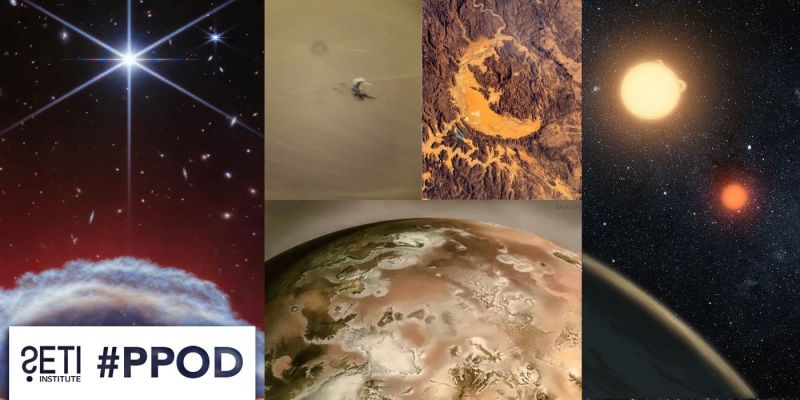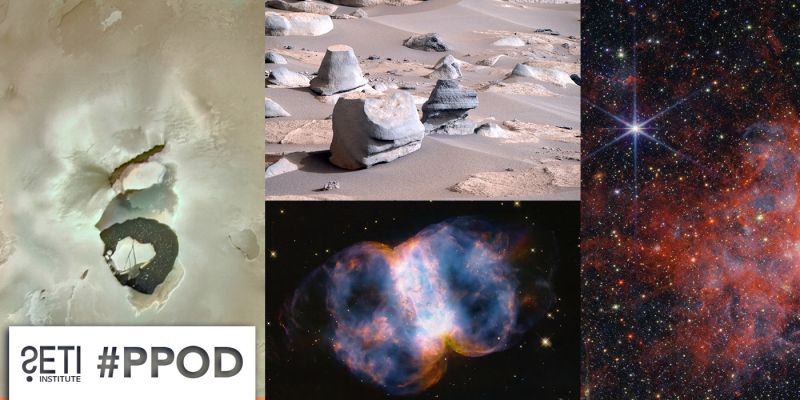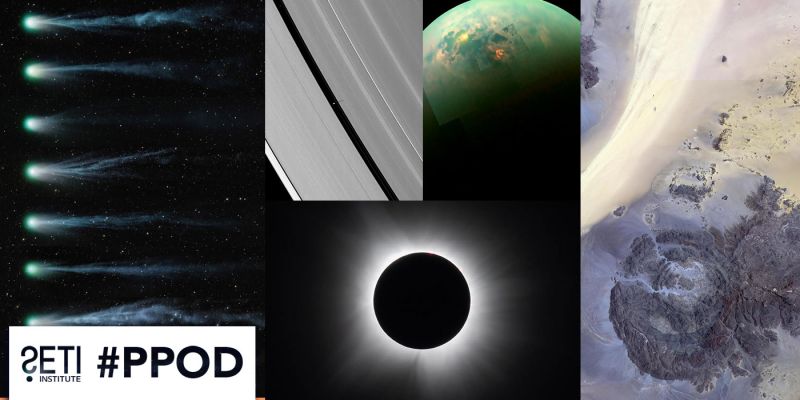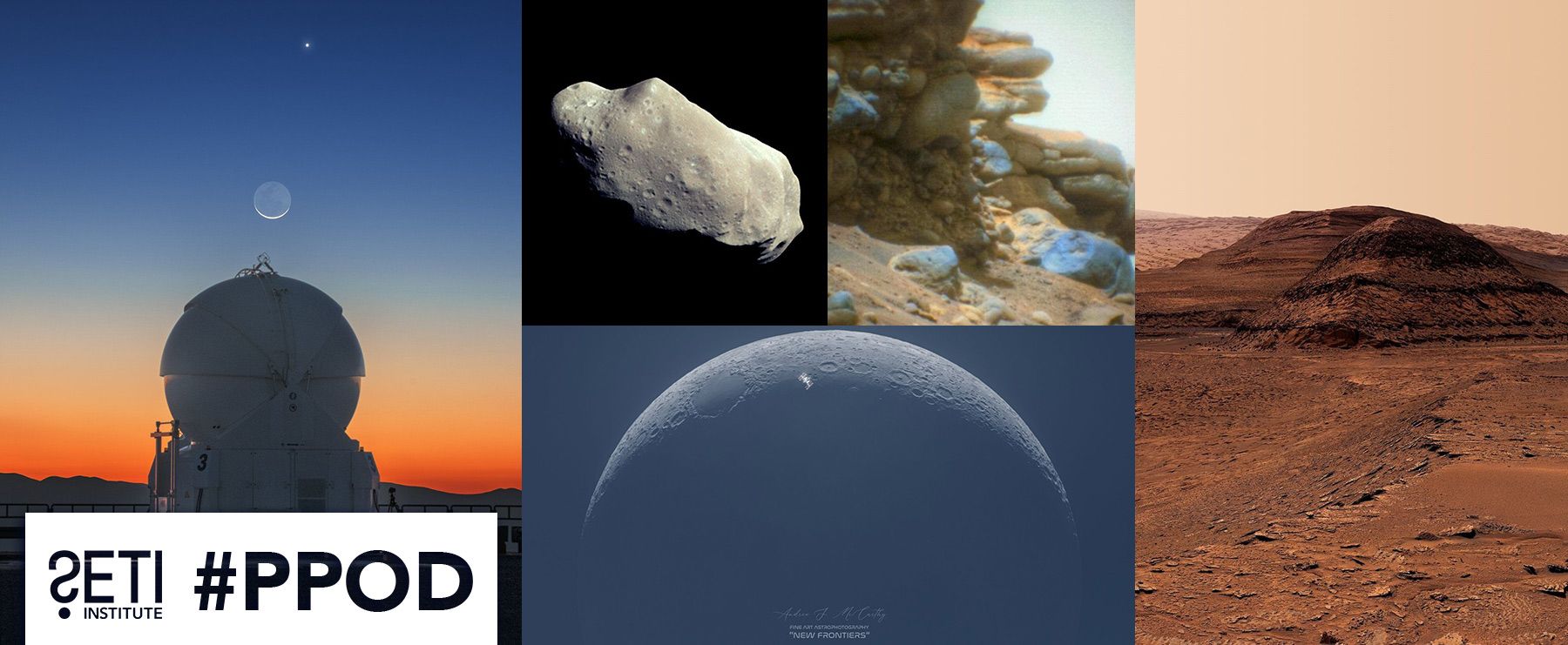
Planetary Picture of the Day
Week of May 29, 2023
Spheres, round rocks, space potatoes, and the ISS in front of the Moon.
Monday, May 29, 2023
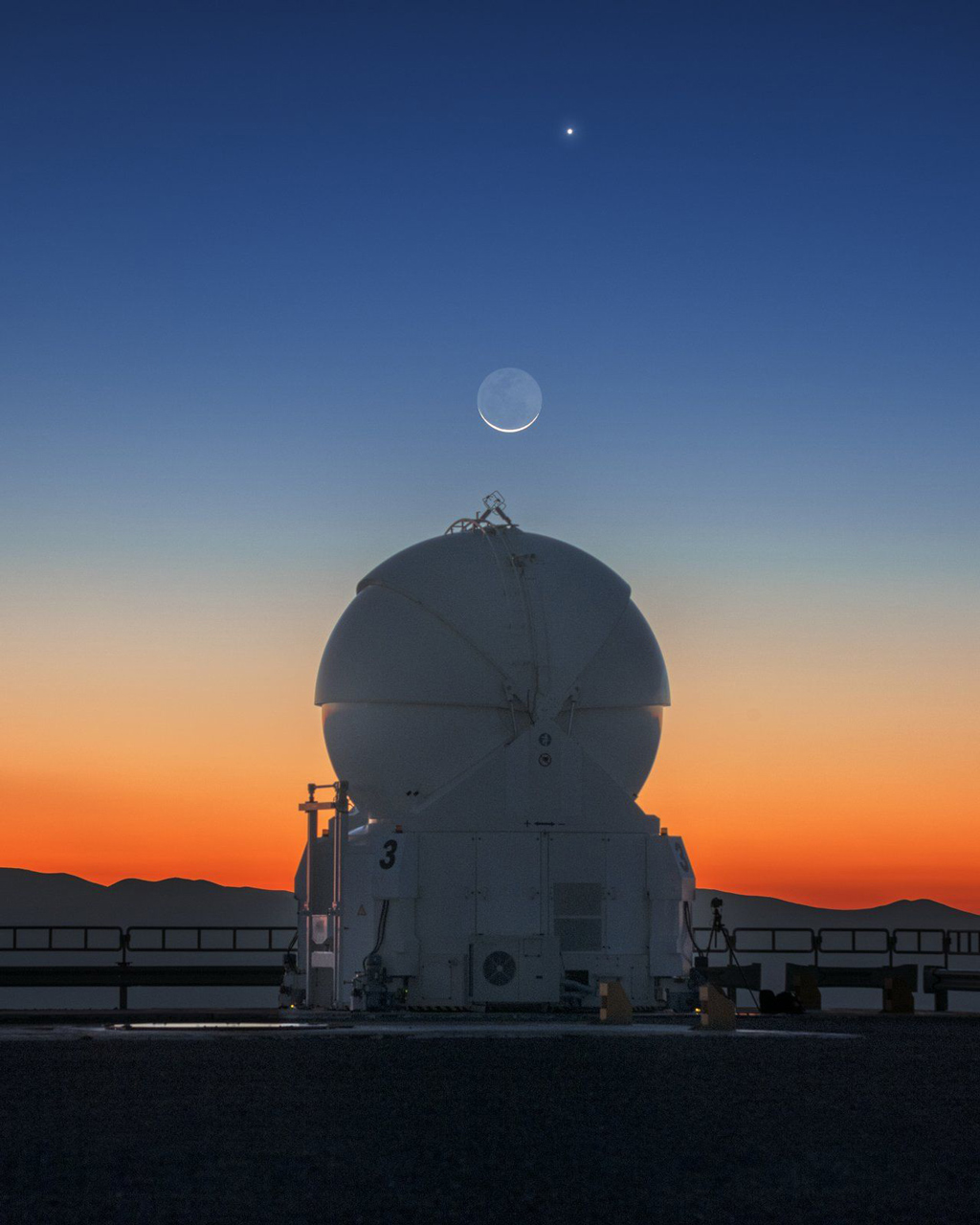
Spheres on Spheres
During one of his visits to ESO’s Very Large Telescope (VLT) at Paranal Observatory in Chile, astrophotographer and ESO Photo Ambassador Yuri Beletsky was fortunate enough to capture this breathtaking sight: three celestial spheres — each very different! — lined up beautifully in the sky.
The largest sphere in this photo is one of the VLT’s four Auxiliary Telescopes. These movable telescopes can be arranged in different configurations to achieve different scientific goals.
Floating above the auxiliary telescope is the Moon. The setting Sun illuminates only a sliver of our rocky satellite, though some of the lunar maria — the dark, sea-like remnants of lava flows from the Moon’s early days — are visible, too. Near the top of the image is Venus, the second planet from the Sun and our planetary neighbour.
Tuesday, May 30, 2023
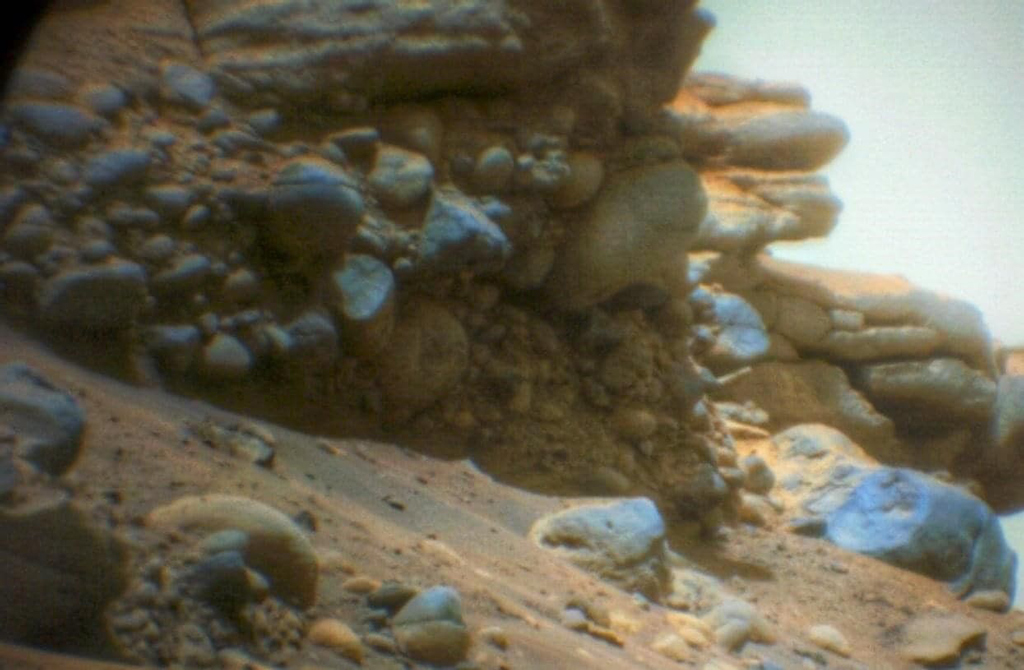
Round Rocks in Jezero
NASA's Perseverance rover sees water-rounded rocks embedded in the layers of the preserved river delta at Jezero crater. The roundness of the rocks implies voluminous flooding, where boulders were shaped by rushing water, transported to the pile here, cemented together, and later excavated by wind erosion.
Wednesday, May 31, 2023
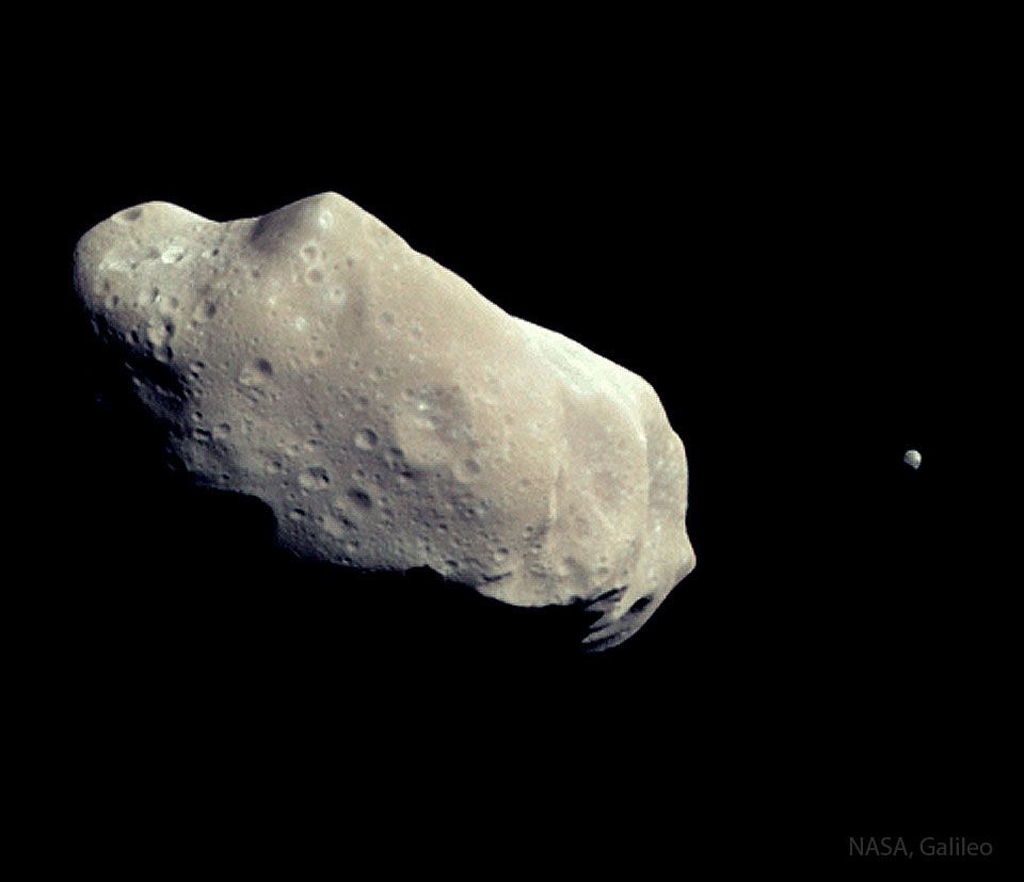
Ida and Dactyl
Not so long ago, we did not think asteroids had moons, and yet, we are discovering that it is actually fairly common. Here is the very first pair that was discovered: Ida (asteroid) and Dactyl (moon). Dactyl is only about 1.6 kilometers across and seen as a small dot on the right of the sharpened featured image. In contrast, the potato-shaped Ida is much larger, measuring about 60 km long and 25 km wide.
Thursday, June 1, 2023
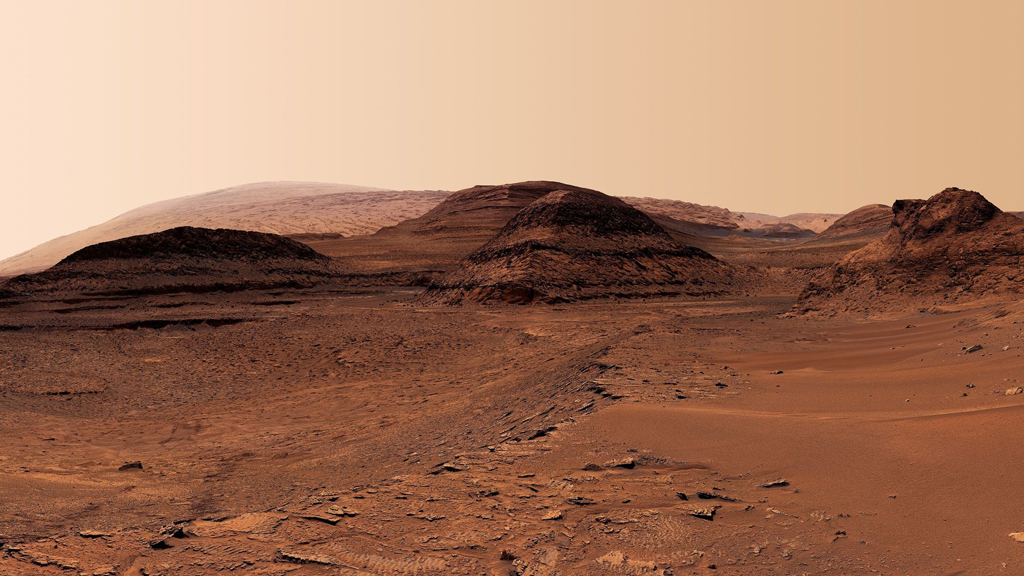
Mount Sharp, Mars
Check out the view as seen from high up on the flanks of Mount Sharp, Gale Crater, Mars, in 4K. This picture is part of a much larger, 137-frame mosaic taken by NASA's Curiosity rover on 16 December 2022. The color was modified to better resemble actual lighting conditions on Mars.
See the full mosaic (altered to resemble light levels on Earth) here: https://buff.ly/43eAkUX
Friday, June 2, 2023
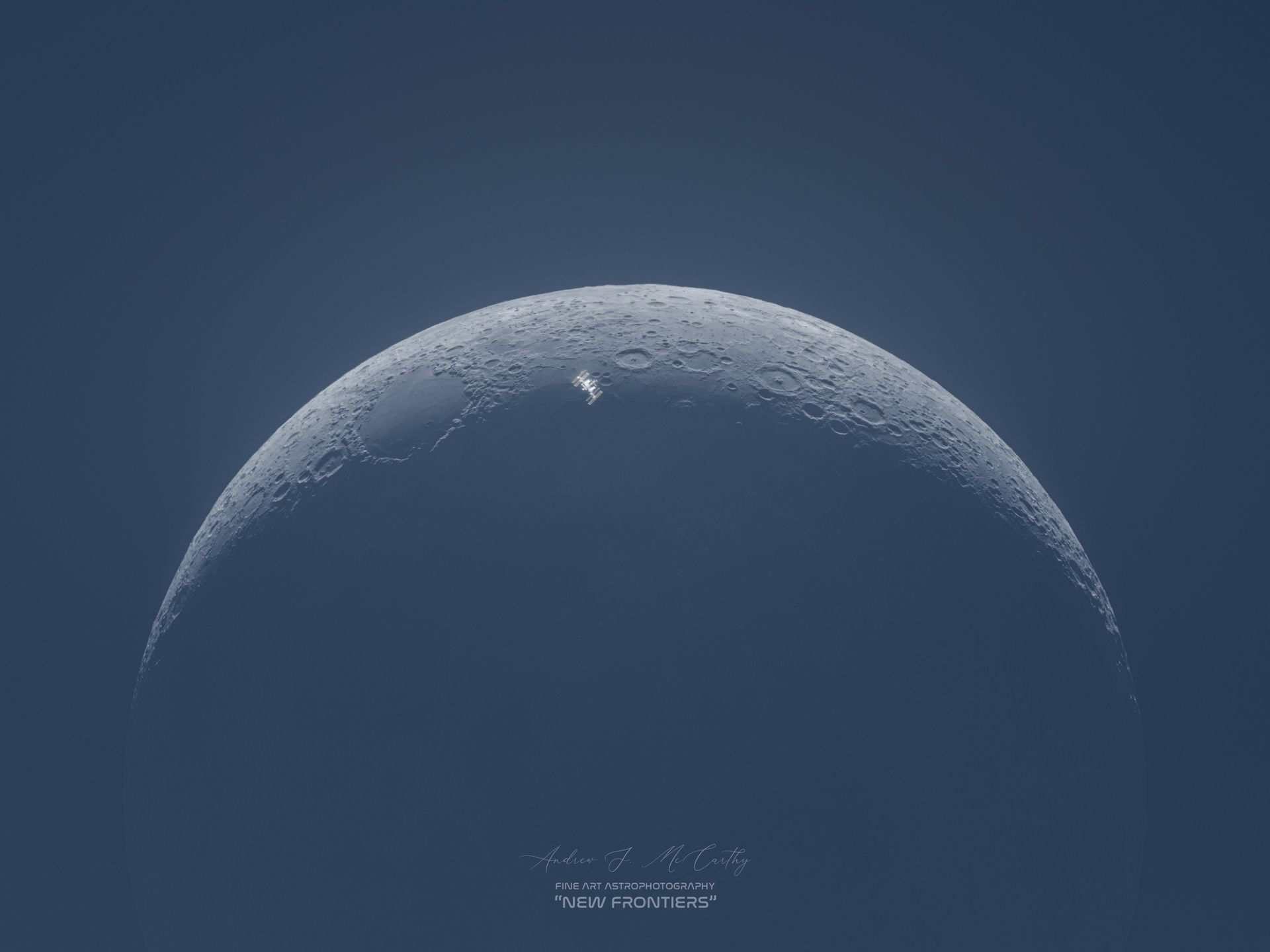
ISS and La Luna
Here is the International Space Station captured in broad daylight as it transited the waxing crescent moon. This fantastic picture was captured using two telescopes in tandem. To learn more about the process: https://buff.ly/3N8W0vR

